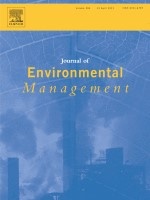Perceptions from non-governmental actors on forest and landscape restoration, challenges and strategies for successful implementation across Asia, Africa and Latin America
March 2021

Forest and Landscape Restoration (FLR) has been defined as a planned process that aims to regain ecological functionality and enhance human well-being in degraded landscapes. Several governments and organizations worldwide rose to the challenge of halting degradation and restoring landscapes. Commitments are ambitious, thus a synthesis of current experiences with and strategies for implementation is important to inform future actions. To guide successful implementation, the Global Partnership on FLR put forward six principles, namely, the conservation and enhancement of ecosystems at landscape scales, the restoration of multiple functions, the engagement of multiple stakeholders, with allowances for context dependency and adaptive management. Non-governmental organizations, acting globally, regionally and (or) at national and local scales, play a fundamental role in supporting governments fulfill their commitments. Therefore, we gathered the perceptions of actors within non-governmental organizations engaged in FLR across countries in Asia, Africa and Latin America about what FLR is and their perceived challenges and strategies for implementation. We employed the six principles of FLR to organize and evaluate the responses. Results show that the principles of landscape scale, ecosystem conservation and enhancement, and multi stakeholder engagement are all considered by interviewees as core components of an FLR program. Yet several restoration projects shared by interviewees still required further evidence of a landscape vision, and the integration of actors beyond local communities and the environmental government sectors. Context dependency was evident in the clear incorporation of local natural resource governance norms, such as tribal and community management in project structure, yet few projects appeared to be designed by local actors. The principle of “adaptive management” was mostly missing from the responses, perhaps because most projects had not had sufficient time to learn from intervention outcomes. Key financial challenges for FLR implementation were the short duration and availability of funding, high-up front costs and few short-term returns. To overcome these challenges, promising strategies relate to the development of tangible economic returns for local actors engaged in productive restorative actions that are planned alongside conservation and ecological restoration actions in the landscape. The challenges of negotiating actions with a multitude of actors and the lack of supportive policies highlighted in the interviews require organizations to focus efforts on leveraging the enactment and enforcement of legislations that look beyond jurisdictional boundaries and support landscape management with clear, long term incentive mechanisms and cross-sectoral collaboration. In addition, implementation can be further supported with the scientifically robust sharing of results on how different FLR projects move forward in meeting the social and environmental objectives of a successful, integrative restoration of degraded landscapes.